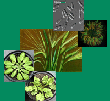| Clemens, S: Safer food through plant science: reducing toxic element accumulation in crops, Journal of Experimental Botany, 70, 5537-5557 (2019), doi:10.1093/jxb/erz366 | |
| Abstract: Natural processes and human activities have caused widespread background contamination with non-essential toxic elements. The uptake and accumulation of cadmium (Cd), arsenic (As), and lead (Pb) by crop plants results in chronic dietary exposure and is associated with various health risks. Current human intake levels are close to what is provisionally regarded as safe. This has recently triggered legislative actions to introduce or lower limits for toxic elements in food. Arguably, the most effective way to reduce the risk of slow poisoning is the breeding of crops with much lower accumulation of contaminants. The past years have seen tremendous progress in elucidating molecular mechanisms of toxic element transport. This was achieved in the model systems Arabidopsis thaliana and, most importantly, rice, the major source of exposure to As and Cd for a large fraction of the global population. Many components of entry and sequestration pathways have been identified. This knowledge can now be applied to engineer crops with reduced toxic element accumulation especially in edible organs. Most obvious in the case of Cd, it appears likely that subtle genetic intervention has the potential to reduce human exposure to non-essential toxic elements almost immediately. This review outlines the risks and discusses our current state of knowledge with emphasis on transgenic and gene editing approaches. |

